Have you ever questioned the authenticity of the diamonds set within your precious jewellery item?
Can we take this seriously? and is there any truth to these home tests?
So while you go dig out your diamond rings that auntie Pat left you in her Will, please note the information below is a guide only and should be taken with caution. If you are in any doubt about the authenticity of diamonds you have bought or been given please seek the opinion of a professional valuer or Jeweller.
1. Use an electronic diamond tester
The simplest and most accurate way of checking the authenticity of your diamond is to purchase a Diamond Tester from amazon. These inexpensive devices can tell you a lot about the properties of your stone.
2. The newspaper ‘ read through’ test.
Place your diamond on a newspaper. If you can read the writing through the diamond then you possibly have a glass or quartz diamond.
Real diamonds have a high refractive index and dispersion of light, they will bend light making it very difficult to see through them. Due to a diamonds unique properties it can look brighter and more colourful than plain glass. If your in doubt then please take your diamond to a local jeweller.
3. The fog test
A diamond is very good at dispersing heat. If you hold the diamond up to your mouth and use the fog method like you would when cleaning a mirror, a diamond should evaporate the fog instantly.
If the fog stays on the diamond for more than 3-4 second then you may be holding a fake diamond.
4. The weighing test
Using a carat or gram scale you can check the weight of your diamond. Fake diamonds will normally weigh 50 – 60% heavier than an authentic diamond of the same size.
5. The rainbow test.
If you look closely at a diamonds sparkle, you should see beautiful shades of Grey reflections. If you see many rainbow reflections, you either have a very low quality diamond or a fake.
6. The UV test.
If you have a UV or Black light to hand then you might want to try this simple test.
Place the diamond under the light in a dark room. If the diamond is real it should show a blue fluorescent glow. The absence of blue, however, does not mean it is fake, it could simply be a higher quality diamond.
If you see a very slight Green, Yellow, or Grey fluorescence under ultraviolet light, it could possibly be a fake.

7. The flaw test
Diamonds tend to have tiny flaws in them such as small cracks, traces of carbon or pinpoints. These flaws are called inclusions and can effect the clarity of the diamond. The less inclusions in the diamond, the higher it scores on the clarity ranking chart.
You can use a magnified glass to check for these tiny imperfections. If you can’t see anything, you either have a very expensive, rare diamond or a fake. You might want to get a professional jeweller to check this over for you.
8. The metal test
As a diamond is a very expensive item to own, they are normally set in precious metals such as Gold, Silver, Palladium or Platinum. Always check the shank of the ring for a hallmark. If you find a hallmark with (CZ) on the stamp then your diamond is a fake
9. The trip test
The best possible place to get your diamond checked out professionally is a trip to your local jewellers.
10. The Water Test
Take a glass of water and drop your diamond into it. If it sinks it is more likely to be a diamond as it has a high density. If it floats above or just below the water you diamond is likely to be fake.
11. Diamond Inspection using a Loupe
A simple and inexpensive Diamond Loupe can be used to magnify the diamond to see it’s imperfections and colour. These imperfections are called inclusions and can tell a diamond expert a lot about it’s quality. White gemstones or Glass stones such as Cubic Zirconias don’t generally have these flaws.





